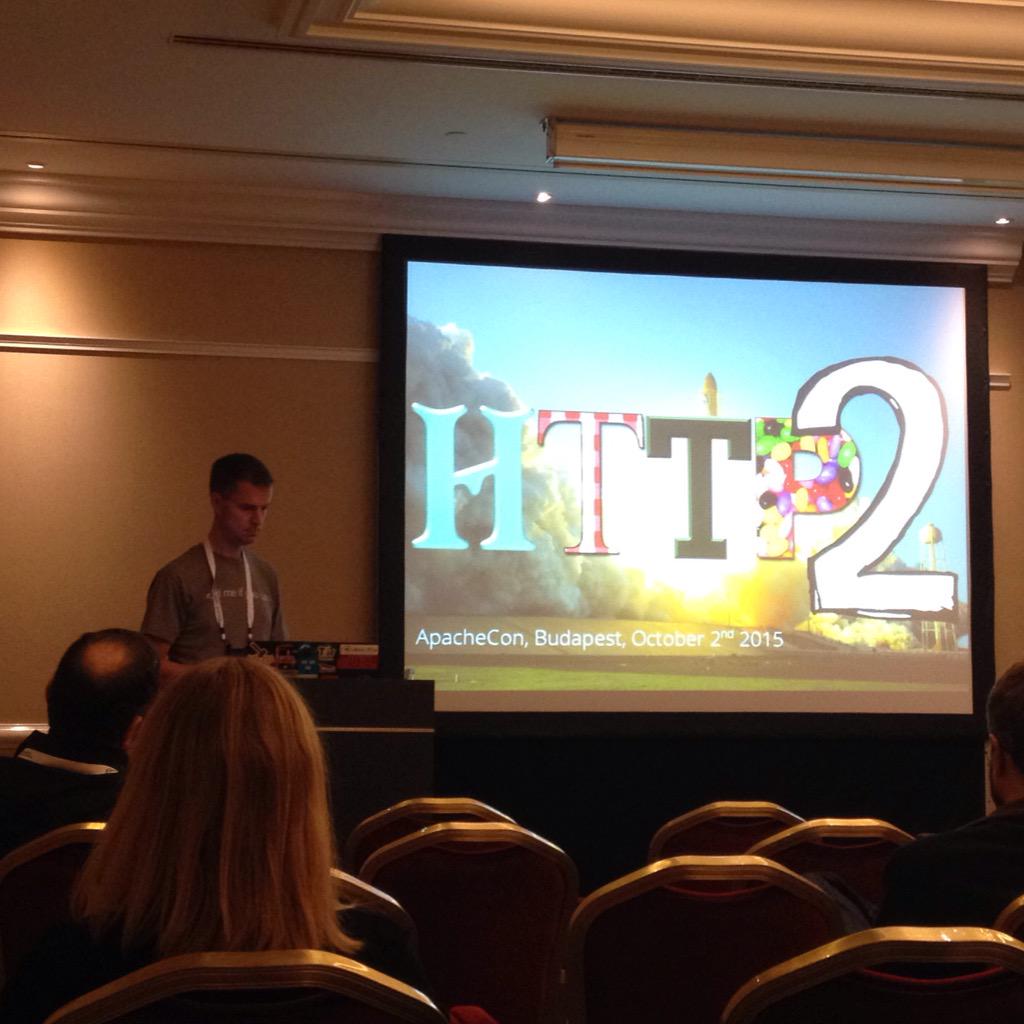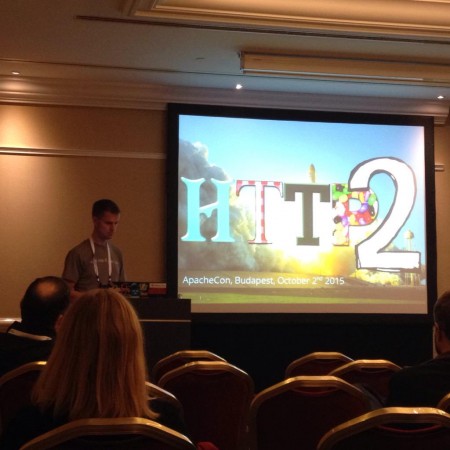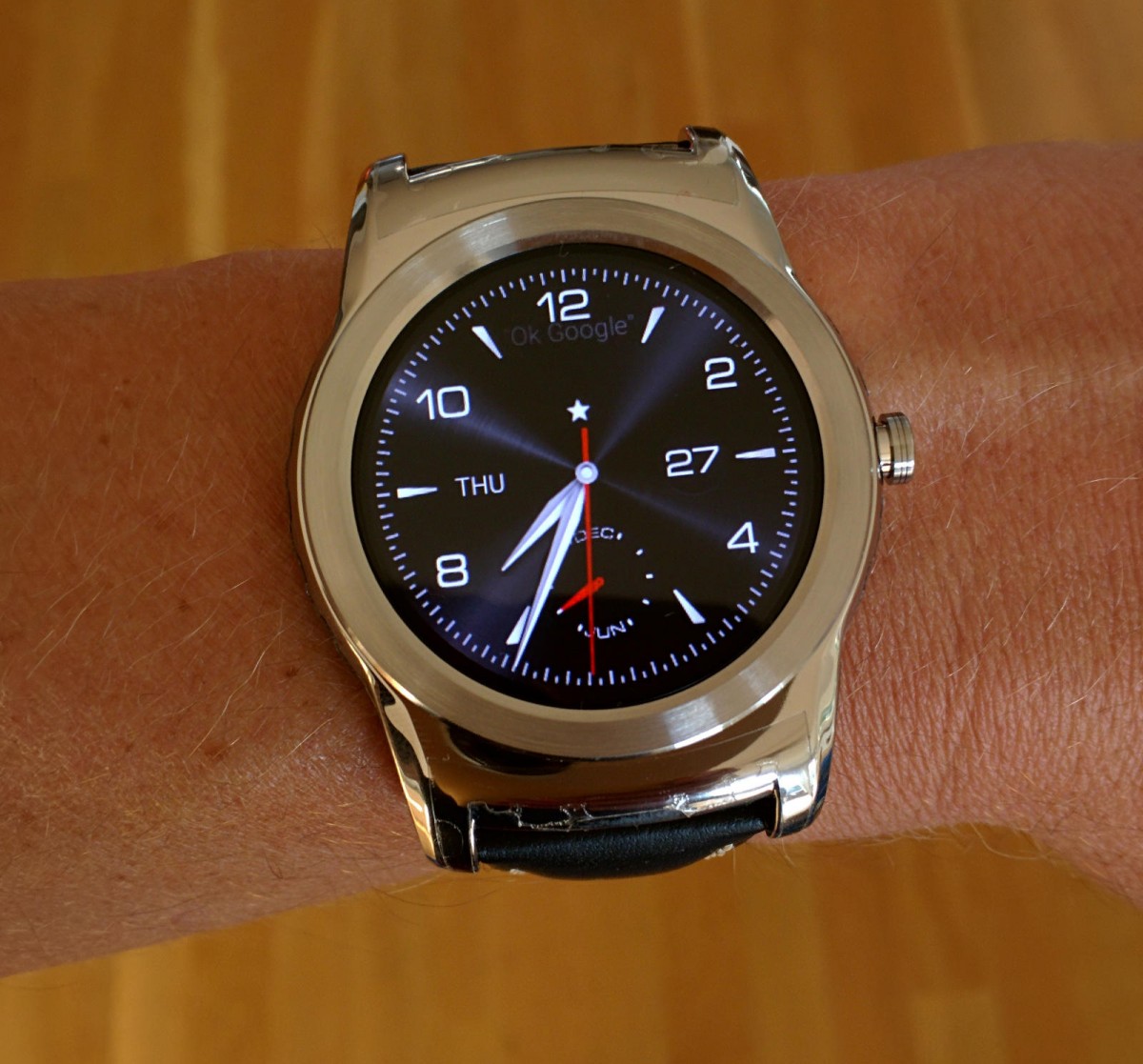My first HTTP/2 talk of the year I did for OWASP Stockholm on January 27th, and I subsequently updated my public slide set:
Tag Archives: talk
A 2015 retrospective
Wow, another year has passed. Summing up some things I did this year.
Commits
I don’t really have good global commit count for the year, but github counts 1300 commits and I believe the vast majority of my commits are hosted there. Most of them in curl and curl-oriented projects.
We did 8 curl releases during the year featuring a total of 575 bug fixes. The almost 1,200 commits were authored by 107 different individuals.
Books
I continued working on http2 explained during the year, and after having changed to markdown format it is now available in more languages than ever thanks to our awesome translators!
I started my second book project in the fall of 2015, using the working title everything curl, which is a much larger book effort than the HTTP/2 book and after having just passed 23,500 words that create over 110 pages in the PDF version, almost half of the planned sections are still left to write…
I almost doubled my number of twitter followers during this year, now at 2,850 something. While this is a pointless number, reaching out slightly further does have the advantage that I get better responses and that makes me appreciate and get more out of twitter.
Stackoverflow
I’ve continued to respond to questions there, and my total count is now at 550 answers, out of which I wrote about 80 this year. The top scored answer I wrote during 2015 is for a question that isn’t phrased like one: Apache and HTTP2.
Keyboard use
I’ve pressed a bit over 6.4 million keys on my primary keyboard during the year, and 10.7% of the keys were pressed on weekends.
During the 2900+ hours when at least one key press were registered, I averaged on 2206 key presses per hour.
The most excessive key banging hour of the year started September 21 at 14:00 and ended with me reaching 10,875 key presses.
The most excessive day was June 9, during which I pushed 63,757 keys.
Talks
This is all the 16 opportunities where I’ve talked in front of an audience during 2015. As you will see, the list of topics were fairly limited…
- HTTP/2 at FOSDEM February 1st, Brussels
- curl in embedded devices at FOSDEM February 1st, Brussels
- practical uses of curl and TLS, at Mera Krypto, March 5 Stockholm
- curl and TLS at Mera Krypto, April 29th Stockholm
- HTTP/2 for TCP/IP Geeks Stockholm, May 6th Stockholm
- (non-public event) curl, for [name redacted] May 21st in Stockholm
- curl – a hobby project with a billions users at Google Tech Talk, August 26th in Stockholm, Sweden
- HTTP/2 with curl, foss-sthlm on June 4th in Stockholm
- (non-public event) HTTP/2 for [rename redacted] September 10th, in Stockholm, Sweden
- HTTP/2, at the GOTO conference on October 2nd in Copenhagen, Denmark
- More HTTP/2, at Apachecon on October 6th in Budapest, Hungary
- HTTP/2 vs HTTP/1.1, at the Velocity conference on October 13th in New York, USA
- HTTP/2 at the Øredev conference, November 3rd, Malmö, Sweden
- curl -one hobby, a billion users at the Øredev conference, November 3rd, Malmö, Sweden
- HTTP/2 for OWASP, November 12th Stockholm
- HTTP/2 for Pensionsmyndigheten. November 30th, Stockholm
h2 performance at Velocity NYC
Tuesday October 13th 2015 I co-presented a talk at the Velocity conference in NYC together with Ragnar Lönn of Loadimpact. Ragnar is a friend of mine and another Swede.
 The presentation was split up in two parts, in which I laid out the foundations of HTTP/2 in the first part, and Ragnar then presented the results of his performance study in the second part.
The presentation was split up in two parts, in which I laid out the foundations of HTTP/2 in the first part, and Ragnar then presented the results of his performance study in the second part.
I think an interesting take away from the study is the following.
Existing sites are usually having a lot of resources that need to get downloaded. An average site has around one hundred now and the number is increasing. Those resources often have dependencies or trigger subsequent transfers. Like a HTML file gets parsed and then a CSS file is downloaded and once the CSS is downloaded it gets parsed and images specified in there are downloaded. It easily gets even more “steps” like that when downloading javascript, that triggers more javascript that renders parts of the page that causes more resources to get downloaded.
Nothing new there, right? But when switching a site like that over to HTTP/2 the performance gain will be capped at a certain percentage no matter how large latency you have to the site because what limits such a site to perform well is the time it takes to get to the end of the slowest “dependency chain”. It is less of an issue with HTTP/1.1 since if the resources are from the same site, browsers won’t do more than 6 requests in parallel anyway (on the 6 separate TCP connections it’ll use).
It becomes evident that in order to make such a site really benefit from HTTP/2, the site would have to be modified ever so slightly so that it would deliver its contents with shorter chains and allow the browsers to get more of the resources earlier, in parallel rather than serially.
The actual talk
Splitting up a presentation in two parts with two talkers is more difficult than doing it yourself. I think we did a decent job and we ended the presentation early. It enabled us to answer to a lot of questions and we were actually quite bombarded with them – all relevant and well considered and I think we managed to bring more to the room thanks to them. A lot of the questions were about more generic HTTP/2 and deployments though and not all exactly about the performance study of the presentation.
The audience gave us an average score of 3.74 out of 5. Not too shabby. The room seated 360 persons but it wasn’t completely filled up.
GOTO Copenhagen
I was invited speak at the GOTO Copenhagen conference that took place on October 5-6, 2015. A to me previously unknown conference that attracted over a thousand attendees in a hotel in central Copenhagen. According to the info desk, about 800 of these were from Denmark.
My talk was about HTTP/2 (again), which I guess doesn’t make any reader of this to raise his or hers eyebrows. I’d say there were about 200 persons in the audience as the room was fairly full. Probably one of the bigger audiences I’ve talked HTTP/2 to so far.
Talked HTTP/2 at ApacheCon
I was invited as one of the speakers at the ApacheCon core conference in Budapest, Hungary on October 1-2, 2015.
I was once again spreading the news about HTTP/2, why it was made and how it works and of course: updated numbers on adoption right now.
The talk was unfortunately not filmed, but I’ve put my slides for this version of my talk online. Readers of this blog and those who’ve seen my presentations before will recognize large parts of it.
Following my talk was talks about mod_http2, the Apache module for HTTP/2 that will be coming in the upcoming 2.4.17 release of Apache Httpd, explained by its author Stefan Eissing. The name of the module was actually a bit of a surprise to me since it has been known as just mod_h2 for its entire life time up until now.
William A Rowe took us through the state of TLS for the main Apache servers and yeah, the state seem to be pretty good and they’re coming along really well. TLS and then HTTPS is important as that’s really a prerequisite for HTTP/2
I also got to listen to Mark Thomas explain the agonies of making Tomcat support HTTP/2, and then perhaps especially how ALPN and a good set of ciphers are hard to get in Java.
Jean-Frederic Clere then explained how to activate HTTP/2 on all the Apache servers (tomcat, httpd and traffic server) and a little about their HTTP/2 state, following with an explanation how they worked on tomcat to make that use OpenSSL for the TLS layer (including ALPN) to avoid the deadlock of decent TLS support in Java.
All in all, a great track and splendid talks with deep technical content. Exactly the way I like it. Thanks everyone. Apachecon certainly delivered for me! Twas fun.
daniel weekly 42, switching off Nagle
Topics
See you at ApacheCon on Friday!
14% HTTP/2 thanks to nginx ?
Brotli everywhere! Firefox, libbrotli
The –libcurl flaw is fixed (and it was GONE from github for a few hours)
No, the cheat sheet cannot be in the man page. But…
bug of the week: the http/2 performance fix
option of the week: -k
Talking at the GOTO Conference next week
Blabbed about curl at Google
I was invited by Robert Nyman to speak at Google in their Stockholm offices on August 26th, in his Google Tech Talk series.
“curl – a hobby project with a billion users” was the humble title of the talk.
curl is like a Swiss army-knife for HTTP and internet transfers. For over 17 years the project has been run by volunteers and now counts perhaps more than one billion users. Daniel takes us through how it started, how it works and why it never gets done.
Already back in June all the 70 seats were taken and there were more than twice as many persons in the waiting list by the time the talk was happening! A totally mind-blowing interest I mostly credit Robert’s reach and ability to gather people.
Here’s the video of the talk:
To my great surprise and joy, I got this awesome gift from the host:
I lead the curl project and this is how it works
I did this 50 minute talk on May 21 2015 for a Swedish company. With tongue in cheek subtitled “from hobby to world domination”. I think it turned out pretty decent and covers what the project is, how we work on it and what I do to make it run. Some of the questions are not easy to hear but in general it works out fine. Enjoy!
Video: My curl talk from FOSDEM 2015
I mentioned the talk before, and now the video has been made available. About 25 minutes with me presenting curl.
My talks at FOSDEM 2015
Sunday 13:00, embedded room (Lameere)
Tile: Internet all the things – using curl in your device
Embedded devices are very often network connected these days. Network connected embedded devices often need to transfer data to and from them as clients, using one or more of the popular internet protocols.
libcurl is the world’s most used and most popular internet transfer library, already used in every imaginable sort of embedded device out there. How did this happen and how do you use libcurl to transfer data to or from your device?
Note that this talk was originally scheduled to be at a different time!
Sunday, 09:00 Mozilla room (UD2.218A)
Title: HTTP/2 right now
HTTP/2 is the new version of the web’s most important and used protocol. Version 2 is due to be out very soon after FOSDEM and I want to inform the audience about what’s going on with the protocol, why it matters to most web developers and users and not the last what its status is at the time of FOSDEM.







